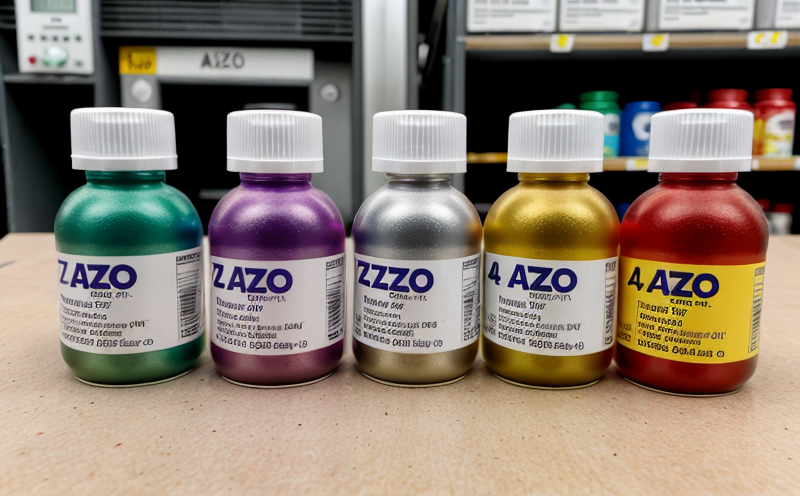AATCC 112 Formaldehyde and metal release assessment in textiles
The AATCC Test Method 112 is a widely recognized standard for assessing the formaldehyde and metal release from textiles. This method evaluates the potential release of hazardous substances that could be harmful to human health, particularly during wear or use. The test is essential for ensuring consumer safety in apparel, home textiles, and other textile products.
The primary focus of this test is on two key aspects: formaldehyde content and metal content. Formaldehyde can be present as a residual component from the manufacturing process or as a finish applied to improve fabric properties. Excessive formaldehyde release can cause irritation, allergies, and other health issues. Similarly, certain metals used in textile treatments may pose risks if released into the environment during wear.
The test involves soaking textile samples in buffered water under controlled conditions for 24 hours at a temperature of (37 ± 0.5)°C. This simulation mimics real-world conditions to which textiles are exposed after manufacturing and usage. After soaking, the solution is analyzed using appropriate analytical techniques such as high-performance liquid chromatography (HPLC) or gas chromatography (GC).
The AATCC 112 standard provides comprehensive guidance on sample preparation, test procedure, and interpretation of results. Compliance with this method ensures that textiles meet international safety standards set by organizations like the European Union's REACH regulation.
For accurate and reliable testing, it is crucial to follow the specified procedures meticulously. This includes selecting appropriate reference materials for calibration, ensuring proper sample preparation, and adhering strictly to temperature and time parameters during the test cycle.
The results obtained from this test are typically expressed in parts per million (ppm) or milligrams per kilogram (mg/kg). These values help manufacturers assess whether their products comply with relevant safety limits. Compliance is particularly important for industries dealing with children's clothing, medical textiles, and other high-risk applications.
Regular monitoring through tests like AATCC 112 helps textile companies maintain consistent quality control and ensure they remain competitive in the global market. By adhering to this standard, businesses can build trust among consumers and regulatory bodies while enhancing their reputation for producing safe and reliable products.
In conclusion, the AATCC 112 test is an indispensable tool for ensuring textile safety by quantifying formaldehyde and metal release from textiles. Its rigorous methodology provides valuable insights into product performance, supporting informed decision-making in R&D, production processes, and quality assurance programs.
Industry Applications
- Apparel manufacturers ensuring compliance with global safety regulations.
- Home textile producers maintaining high standards of product safety.
- Medical textiles firms guaranteeing safe handling for patients and healthcare workers.
- Fabric dye houses developing new colorfast formulations without compromising health safety.
- Sportswear brands focusing on durable, yet harmless products for athletes.
Eurolab Advantages
Eurolab offers unparalleled expertise in textile testing, including the AATCC 112 formaldehyde and metal release assessment. Our state-of-the-art facilities provide precise measurement capabilities using advanced analytical instruments such as HPLC and GC.
We employ experienced staff trained in adhering to the latest international standards, ensuring accurate data collection and interpretation. Our comprehensive approach covers not just testing but also consultation services that help clients understand their results fully.
Our commitment to quality is reflected in our adherence to ISO/IEC 17025 accreditation, which guarantees unbiased test outcomes. Clients can trust Eurolab to deliver reliable and consistent results every time, supporting informed business decisions based on scientific evidence rather than guesswork.
Eurolab’s services extend beyond just testing; we offer tailored solutions that address specific client needs. Whether it's helping you interpret your data or providing strategic advice on product development, our team is here to assist throughout the entire process.
Competitive Advantage and Market Impact
Earning and maintaining compliance with standards like AATCC 112 can significantly enhance a company’s competitive position. By demonstrating adherence to stringent safety protocols, businesses create confidence among consumers who value health and environmental responsibility.
Compliance also opens doors to new markets where strict regulatory requirements exist. For instance, the European Union's REACH regulation mandates rigorous testing for formaldehyde and metal content in textiles imported into Europe. Achieving compliance through tests like AATCC 112 can facilitate easier market entry and broader customer base expansion.
In addition to regulatory compliance, being able to demonstrate a proactive approach towards product safety can differentiate brands in crowded markets. This transparency fosters brand loyalty and enhances public perception of the company as socially responsible and forward-thinking.





